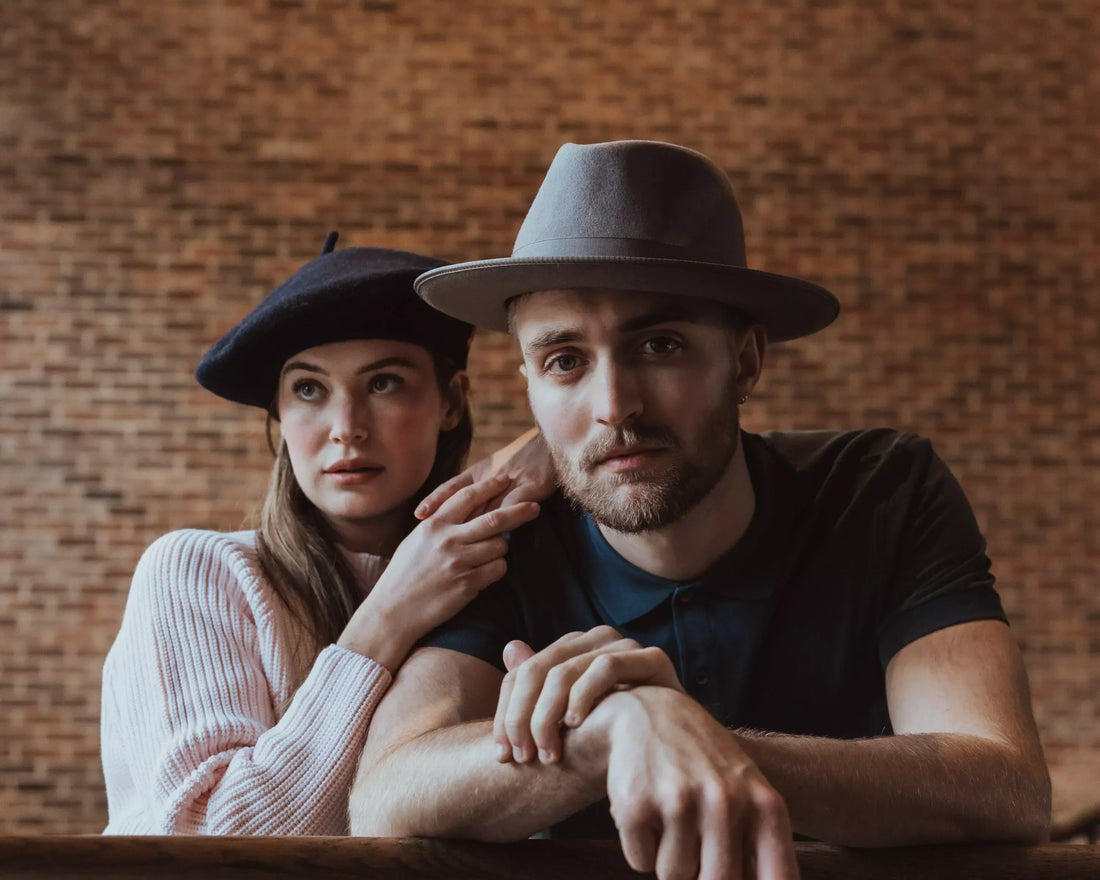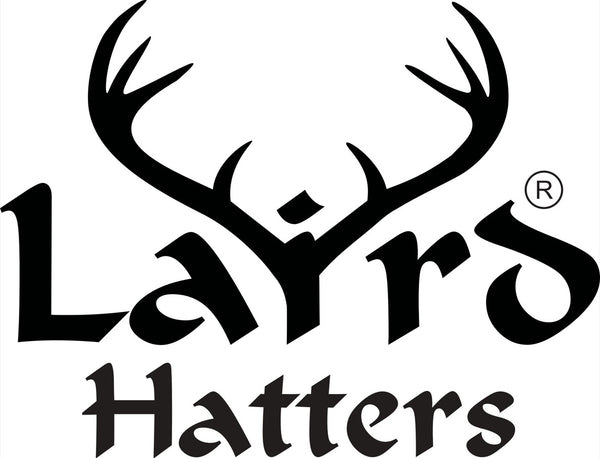
Laird’s Guide to the Trilby vs Fedora Hat
Share
Comparing the Fedora and Trilby Hat
Hats like the Fedora and Trilby remain popular thanks to their understated elegance and the iconic figures who’ve worn them — from Frank Sinatra and Cary Grant to Harrison Ford as Indiana Jones. At Laird, we’ve been crafting both styles since opening our doors in 2009.
We’re often asked about the difference between the two, so here’s a quick guide to help you tell them apart.
Features of a Fedora Hat:

Though there is little definitive evidence, the Fedora generally seems to be American while Trilby is more commonly known in England.
The term ‘fedora’ was in the 1880’s in New York, originally a woman's hat until the 1920’s, and was made famous by Sarah Bernhardt, a hatter herself, as ‘Princess Fedora’. Richard Davy was said to be the first man to wear a Fedora in New York.
1. Pinched Crown
The Fedora typically features a creased crown with pinches at the front on both sides, creating a teardrop or centre dent shape. This gives it a structured, refined silhouette.
2. Wide Brim
A defining characteristic is its medium to wide brim, usually around 2 to 3 inches. The brim can be worn snapped down at the front and up at the back — a popular style — or kept flat for a more contemporary look.
3. Soft, Mouldable Felt
Traditionally made from soft felt (often wool or fur felt), the Fedora is designed to be flexible and comfortable, allowing it to maintain its shape while offering some custom moulding to the wearer's preference.
The Fedora is ideal as both a town and country hat, for its’ stylish durability in all weathers, down-brim or crushable, makes it the ideal Safari, Country, City Hat or Travelling hat.
Features of a Trilby Hat:

The Trilby takes its name from the stage adaptation of George du Maurier’s 1894 novel Trilby. The hat gained popularity after it was worn in the London stage production of the play in the late 19th century, where audiences began referring to the style simply as a “Trilby”. This moment firmly rooted the hat in British culture, drawing a clear transatlantic contrast between the Trilby and its American cousin, the Fedora, which was rising to prominence around the same time across the pond.
1. Shorter Brim (Often Angled Down at the Front)
The Trilby is known for its shorter brim, typically less than 2 inches, and more sharply angled down at the front and up at the back. This gives it a sharper, more modern profile compared to the broader, flatter brim of a Fedora.
2. Taller, Narrower Crown
While both hats feature a pinched crown, the Trilby often has a taller and more tapered crown, giving it a sleeker, more fitted look — often perceived as more fashion-forward or contemporary.
3. Set-Back Brim Positioning
One subtle but distinctive trait is how the brim sits further back on the head, with less coverage over the face. This differs from the Fedora, which typically offers more sun protection due to its forward-brimmed style.
Both Styles Will Give You an Edge
Whichever side of the Atlantic your style leans towards, you can’t go wrong with either of these versatile hats. Both the Trilby and the Fedora are steeped in cultural significance and timeless appeal.
Throughout film and television history, hats have been powerful symbols of character and charisma — from Gene Kelly in Singin’ in the Rain to Trevor Howard, and from the smoky intrigue of film noir to the unmistakable silhouette of a private detective or gangster. Think of the Corleone family in The Godfather, Humphrey Bogart in Casablanca, or Warren Beatty in Dick Tracy. Even in music, the look endures — immortalised by The Blues Brothers.
In recent years, vintage style has seen a strong revival. With figures like Don Draper of Mad Men and the ongoing influence of publications like The Chap Magazine, classic headwear has reclaimed its place in modern wardrobes.
